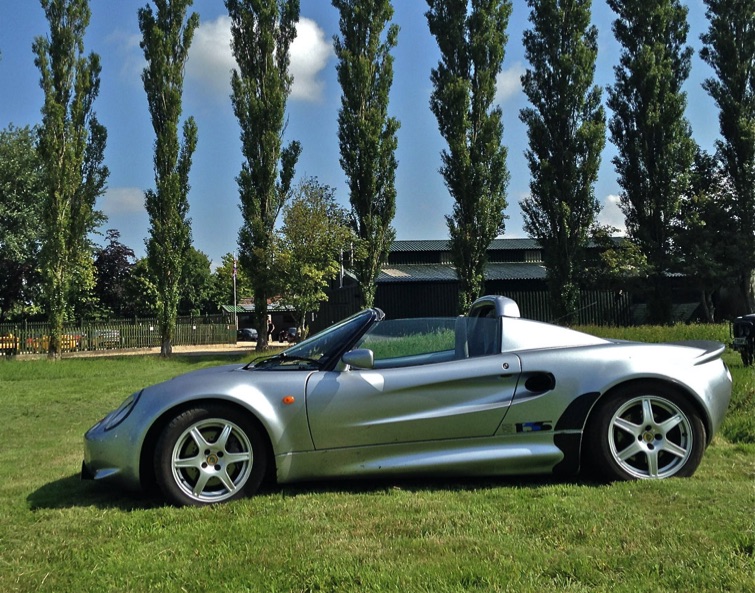
Fuel consumption was generally little short of the standard 118hp Elise in factory estimates: I have seen from 33 to 44.7 cross-checked mpg, so it is exceptionally sensitive to your right foot. Fairest to say you have to really rag it to get below 30 mpg and can reasonably expect 35-38 mph all legal use.
Modifications to the factory spec on my Elise included blue leather seats, Momo detachable steering wheel, a faux-Ferrari metal gate for the floppy gear-change, on-board recharging, refurbished road wheels with barely scuffed Toyos (oversize at the front) sitting on radically low ride height suspension.
Not a totally original factory spec. — the red insert cloth seats and ditto original steering wheel were not present. Original seats were available for extra cash, but unlike the car they were a bit rumpled. Besides, I liked the similarly effective replacements provided, complete with their inflatable backrests.
Other factory facts on this, the lowest powered but widely admired Lotus Elise Sport derivative, follow. From November 1998-on Lotus assembled a batch of 49 Sport derivatives, then 34 slightly modified, which is the batch in which mine was created. They shared 135 hand-built horsepower (non-VVC) in place of the launch 118 horses; obtained via reworked cylinder head of Janspeed expertise, and sports exhaust system. Both in alliance with the usual MEMs Rover ECU software that appears very tolerant of hardware alterations and battery swaps.
Just as useful in the speed department is a genuinely closer ratio gearbox, and cross-drilled iron discs: original MMC metal matrix composites were dropped in June 1998.
The 135 sported some individual features. Most useful were the Lotus ‘Competition’ seats and sports steering wheel. Externally there were side 135 Sport decals, durable metallic Quicksilver paint, headlamp covers. Silver is applied for the glass fibre cover over rollover bar. All hidden beneath the blue deck chair cover that serves as a hood on an S1.
My second batch model differed in details as 111S alloys and tyres, complemented legally via modest rear spats. There was a black fuel filler cap (twisted, mine supplied as a spare), matt finish to the alloy gear lever knob and 135 Sport decals with additional 99 logo.
The Elise was beautifully presented, despite living outside, under a cover, for much of its lightly used recent life. Only the inevitable scars of the rear hood pins marred the paint and the nose-section lacked the expected stone chips. Mechanic Kevin Nicholls of KN Cars in Swindon had looked after this example, completing a top-end rebuild less than 1500 miles previously. A split water hose, consequent overheating demanded a head gasket with the precaution of a replacement, uprated, and radiator.
That first drive back was memorably exhilarating and scary. Exciting beyond belief on Wiltshire’s open A roads and crested swerves, scary in traffic.
Why?
That 25OC Summer day ensured 90OC water temperature was exceeded in small town rush hour. Waiting on an uphill minor road junction to join a busy A major road, 100OC arrived and disappeared, and then the digital Stack dash started to pulse on/off. Visions of four figure bills to follow our first trip materialised!
I joined the A-road in unseemly haste and the digital readout calmed down, reporting under 900C within a 55 mph mile. Home safely with no further dramas, spent the next 24 hours studying well-thumbed handbook. Stopped reading, reassured on the 120OC boiling point of the pressurised Lotus Elise cooling system.
Then came 200 miles establishing priorities — and a wish list.
Temperatures were tackled with Lotus approved X-part coolant containing a glycol supplement (shades of WW2 Rolls Royce V12 aero motors!).
I checked that the 15 lb. pressure cap was healthy and demanded a sliver of heater support, just like the Frog! The result was a steady 84-85OC in mild traffic, 87-89OC in 5-minute jams. The dash hasn’t defaulted to flashing mode since, but it hasn’t honestly been tested as severely as in that first collection run.
I was bit worried by only having one functional Cobra immobiliser key for the slightly later factory installation. Contacted Cobra on the website, but to replace the programmed touch key required its return to Cobra Car Tech. I did not want the vehicle out of service, never mind any “lost in post scenario”, so I still take that solo key risk, backed by two well flaked remote ‘keys’.
I bought a very useful ‘shower cap’ to use instead of the clumsy S1 hood. It served well both in Britain’s earlier showery Summer at shows and Silverstone Classic. My temporary top came from Elise Parts online and was more expensive than the Club Lotus item, as I discovered when I joined.
An insurance discount from Footman James persuaded me away from returning to Hagerty again, who would only allow 3000 miles p.a. on this ‘modern,’ where FJ offered another 2000 annual miles.
As I twirled toward my first Elise 1000 miles, a pothole decided my priorities. Following a visit to an Open Day for official Lotus dealers Williams Automobiles, a fantastic drive back from Gloucestershire saw the Lotus hit a clump of potholes skulking in shadow near Castle Combe.
Slowing for the next junction there was a strong vibration, which persisted for 35 shaky miles home. I managed to isolate that it was speed related and could drive around the worst of it, but there was no doubt I would not be using the car again until it was fixed. And I already knew that suspension was definitely too low and that one rear damper was leaking profusely, so suspension, along with any improvement in gear change quality, needed urgent attention.
At £80 an hour, and with Morgan a more established speciality, at the official Lotus dealership I started looking for a local specialist with a lower labour rate, expertise in ride and handling priorities…and a trailer!
I found it all, but not where I expected. More adventures were required before a successful answer and new problems of a more mundane nature appeared, but more of that next time in PART THREE
ELISE CONTACTS
Piston Heads: my Elise found on this classified site
www.pistonheads.com/classifieds/used-cars
Kevin Nicholls KN Cars: Located outside Swindon, Tel:07850468092
Williams Automobiles: Official Lotus & Morgan Dealers outside Bristol:
Cobra Alarms & immobilisers:
www.eliseparts.com: Wide range of standard and modified bits. Excellent service with a loyalty discount.
Also online and browsed were: www.hangar111.com which is more modified and competition-oriented. Subsequently used www.elise-shop.com, failed to realise Dutch origins, marred service. Monitor eBay for rare parts.
Club Lotus: Strong Elise membership and necessary for classic insurance, plenty of events and valuation service.
www.coteriepress.com: are the publishers of Lotus Elise: the official story and Lotus Elise: the Official story continues, both by JW. Both listed as sold out/special order in Europe — available in the USA at $75 and $95 respectively.
LOTUS ELISE – Part 2
Low Rider Starter
LOTUS ELISE – Part 2
Low Rider Starter
On a visit to Williams, posh and official Lotus/Morgan Dealer
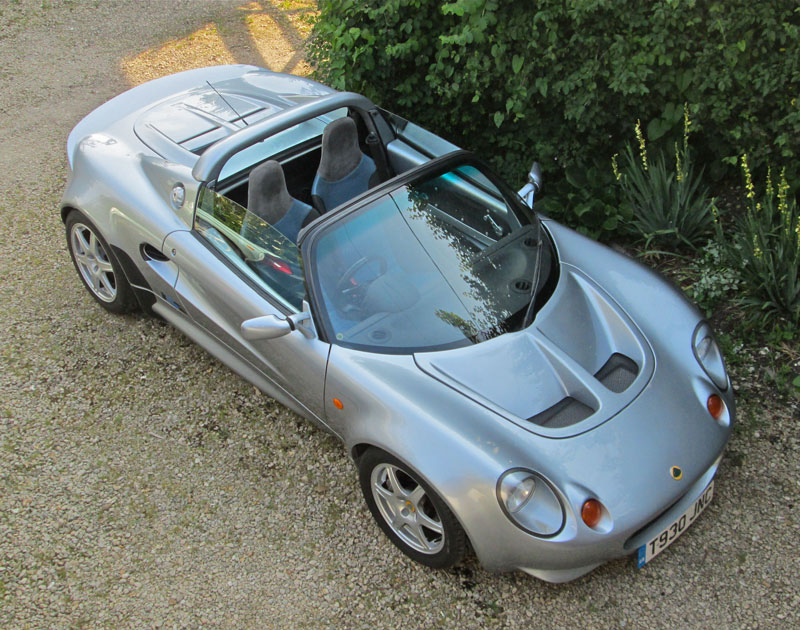
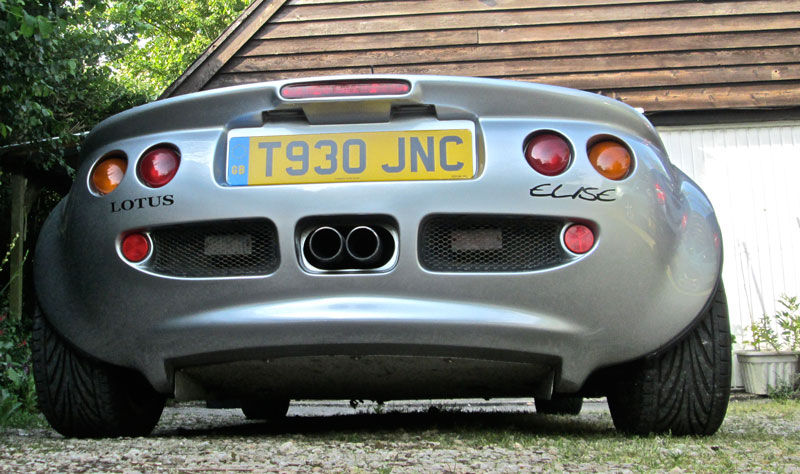
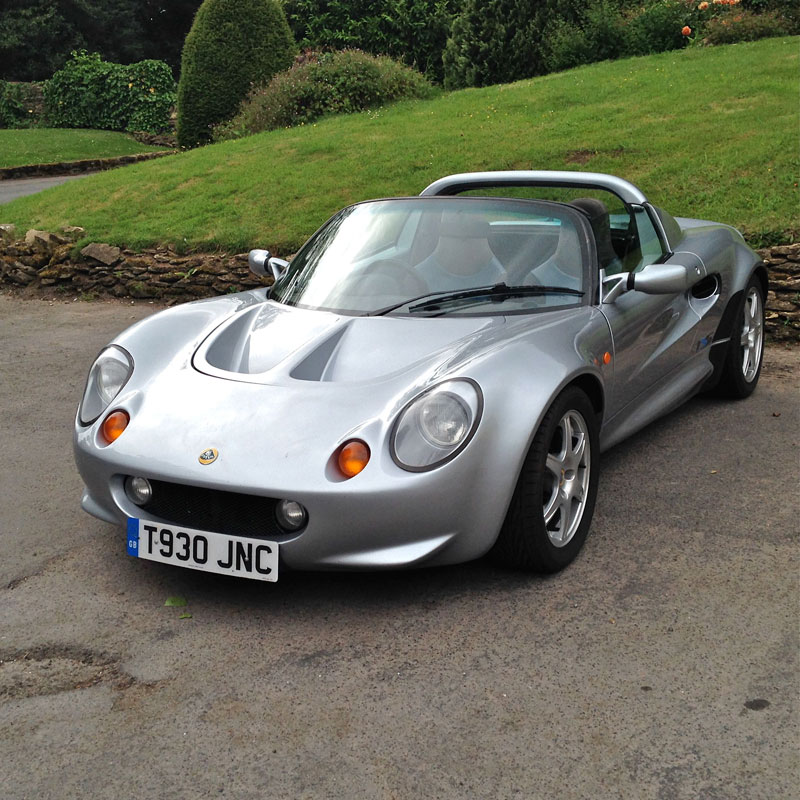
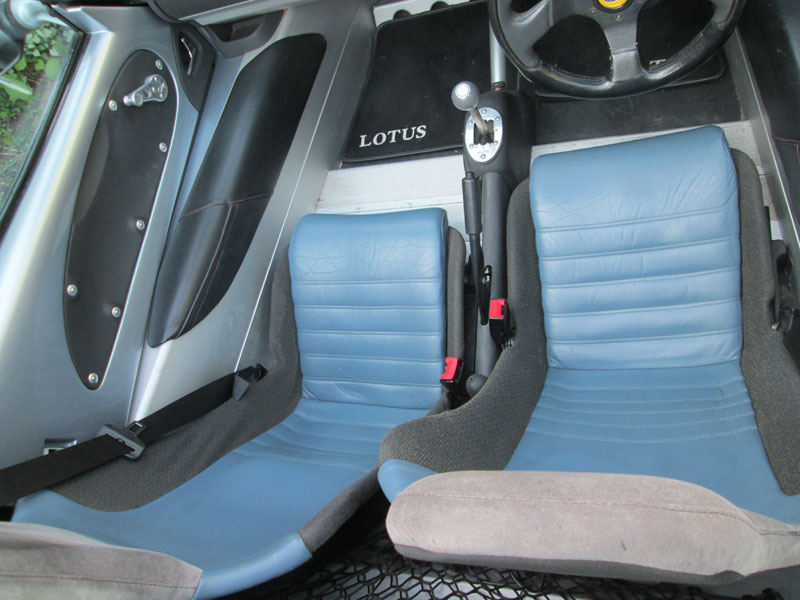
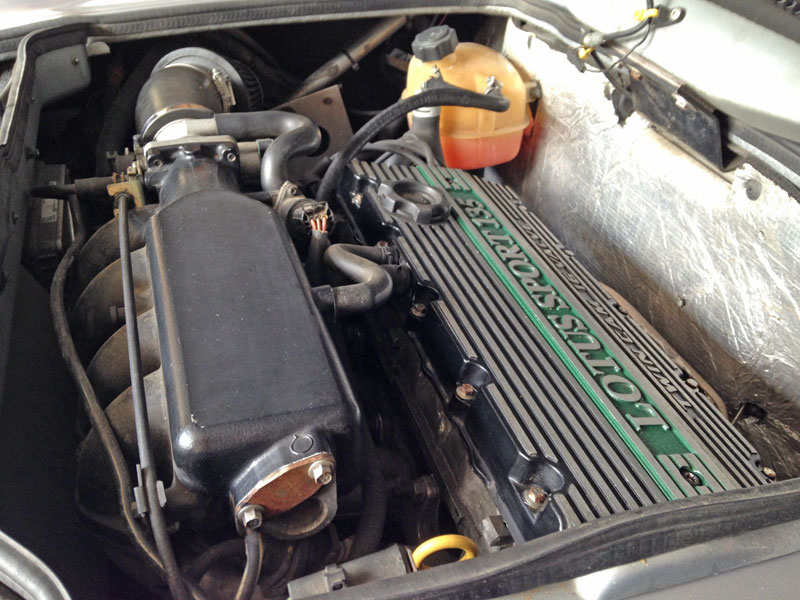

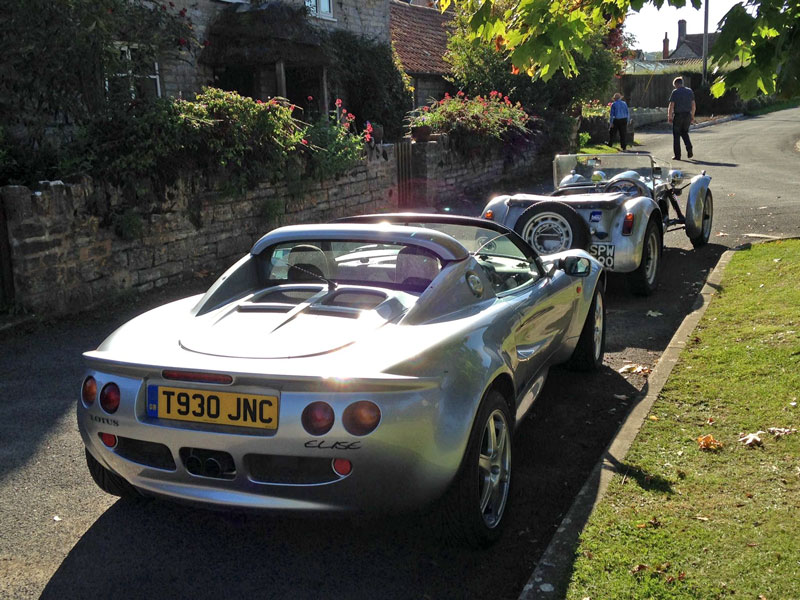
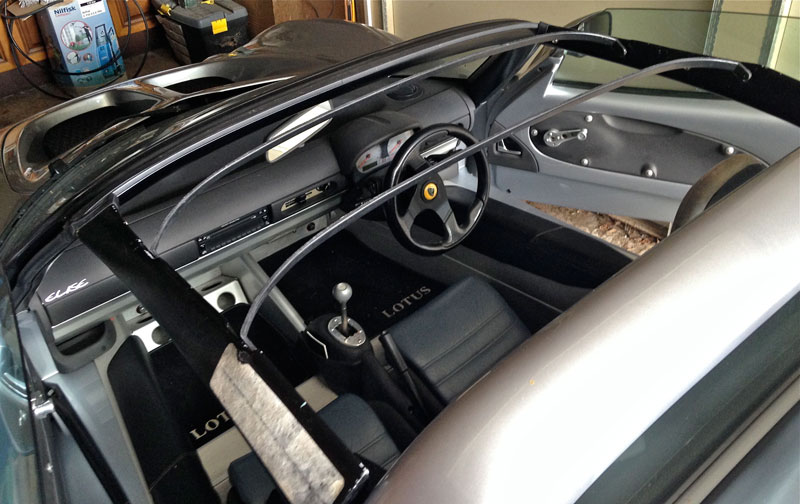
To recap in a little more detail on the Elise I bought in June 2015, a comparatively rare 1998-built, 1999-registered Elise 135 Sport.
Elise has now covered its first 1000 miles with me, meaning a total 55,640 on the digital Stack readouts. The 135 tag refers to advertised horsepower, which was available built into a factory car (as here) or as an aftermarket package. Max torque remained modest at 121 lb ft, but the close ratio gearbox and a still low 730kg kerb weight allowed 0-60 mph to occupy little over 5 seconds, allied to a 128 mph top speed.
